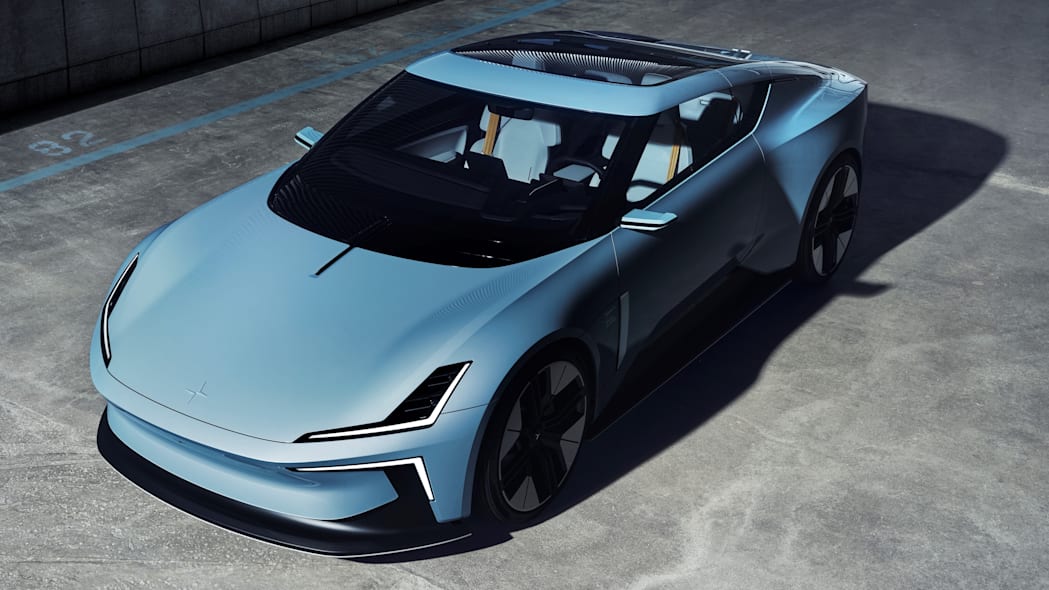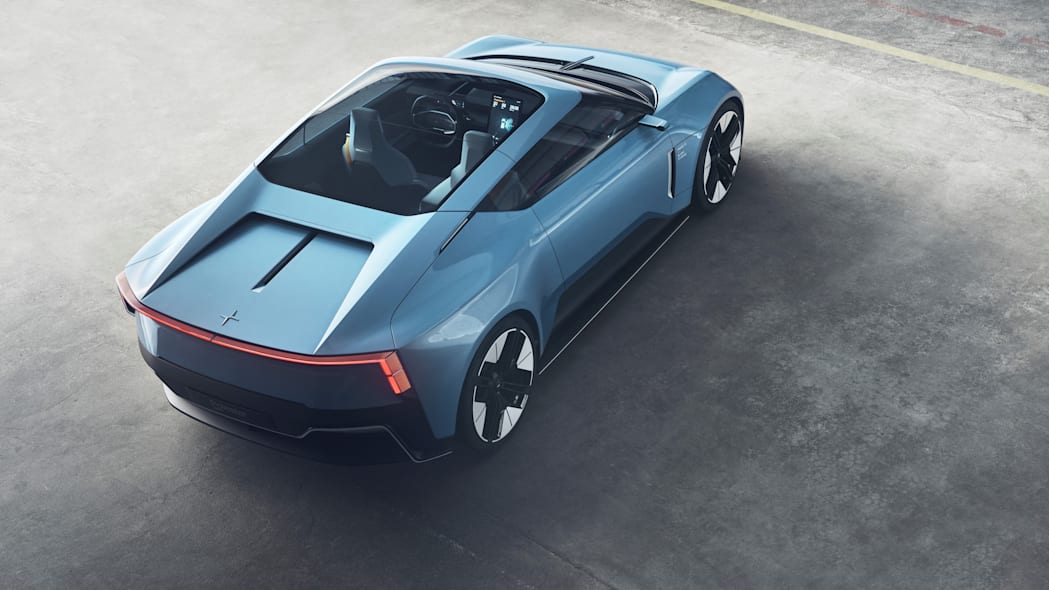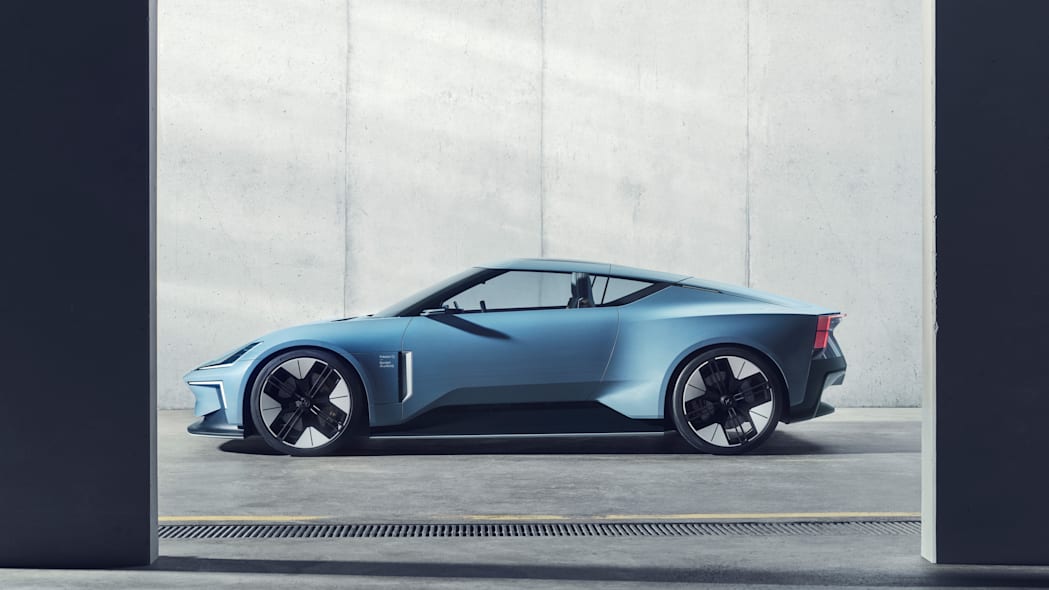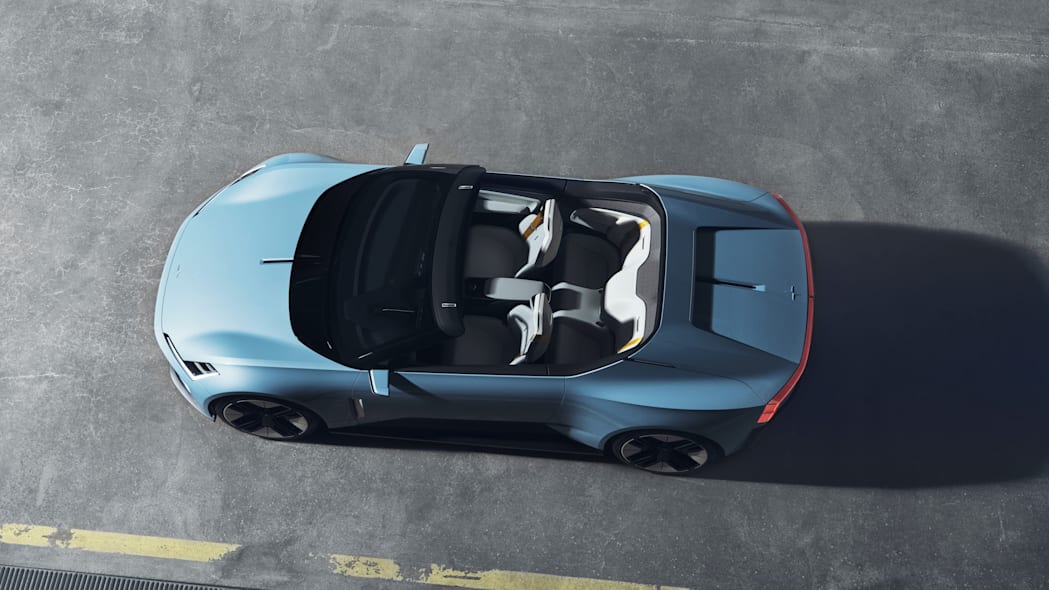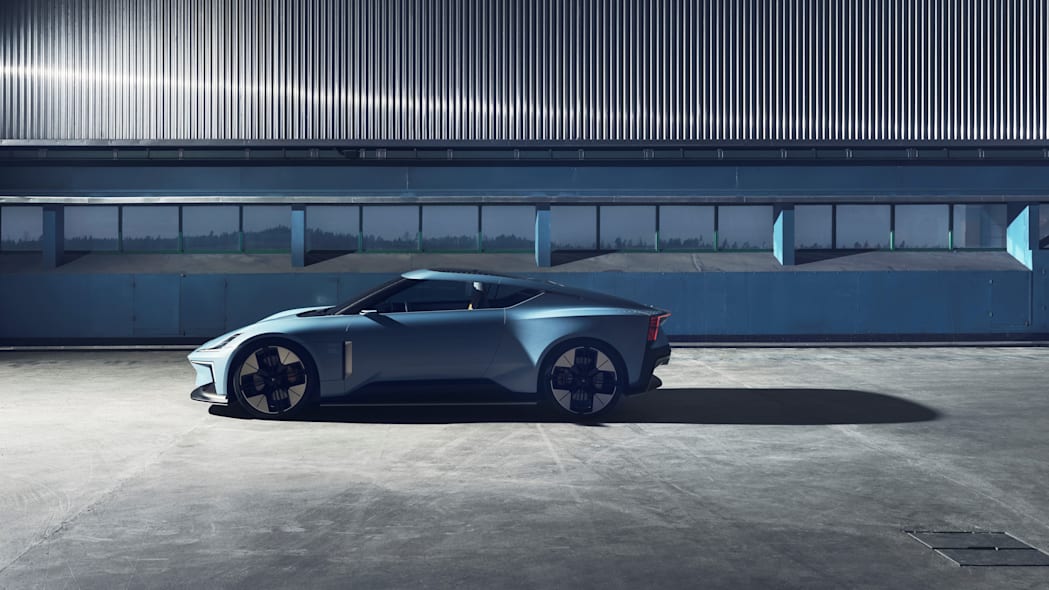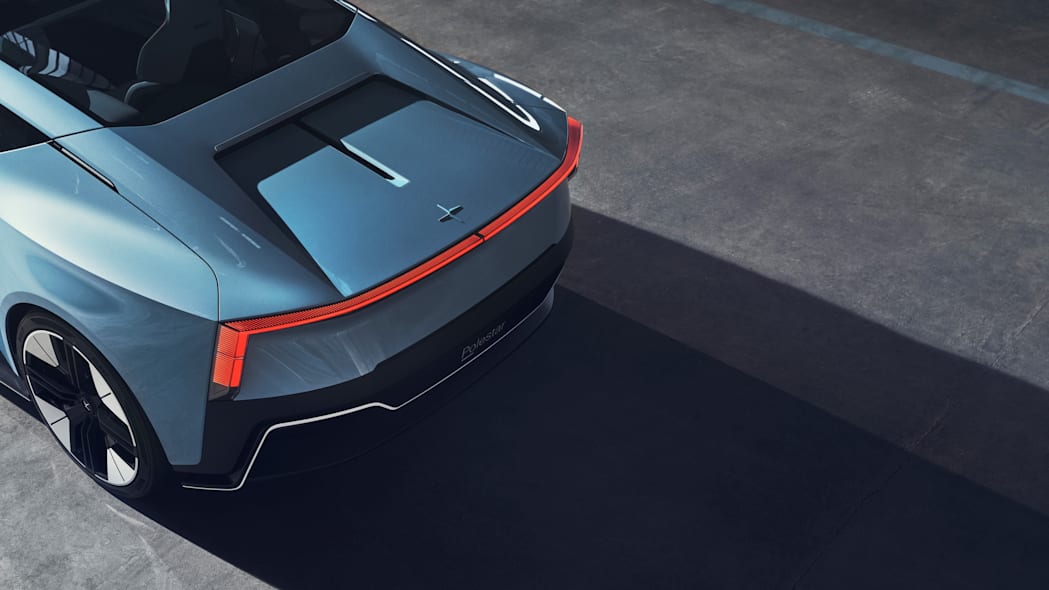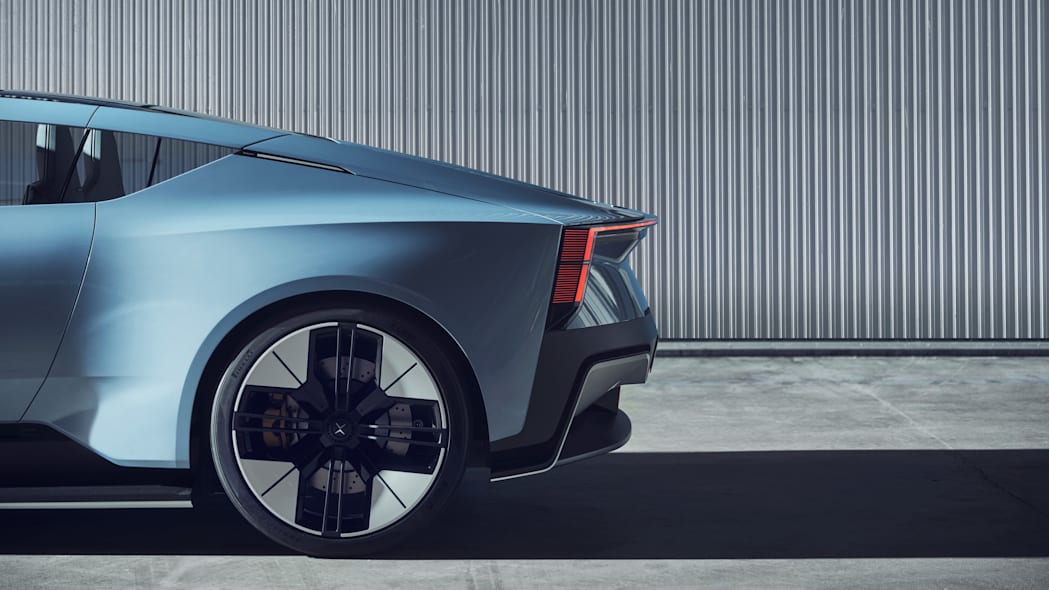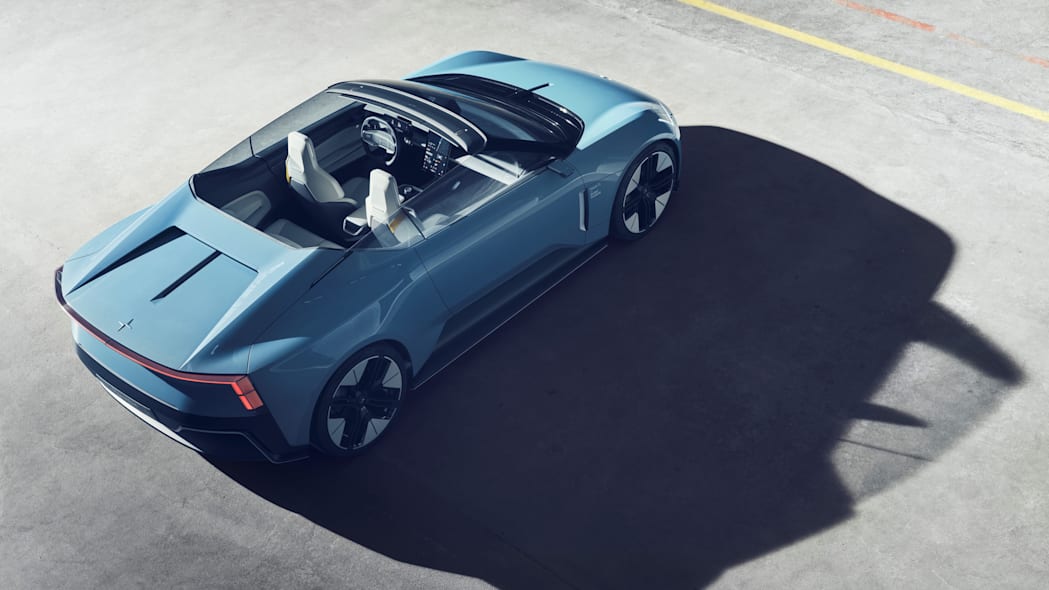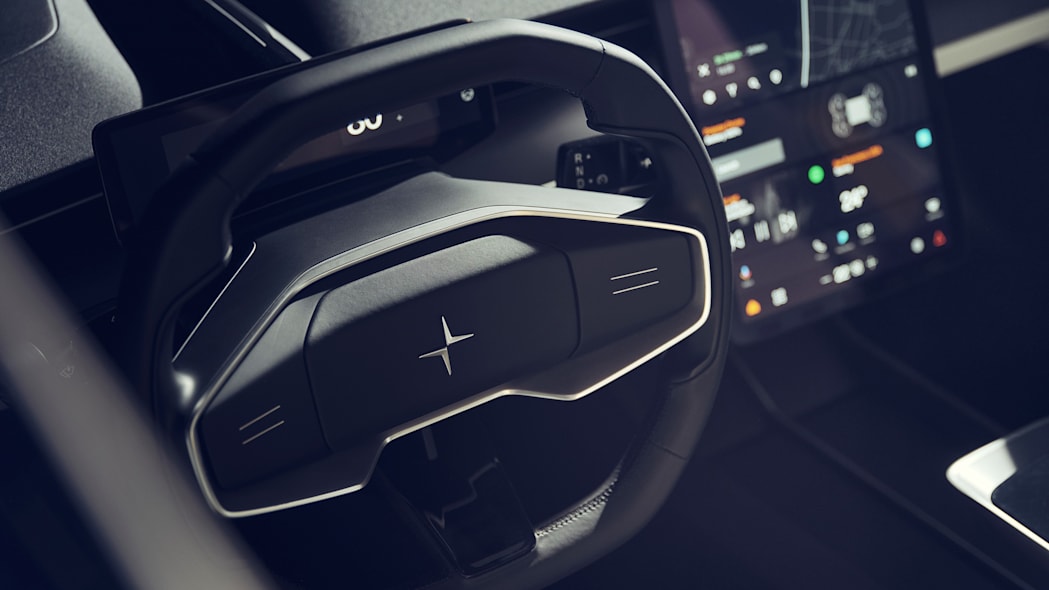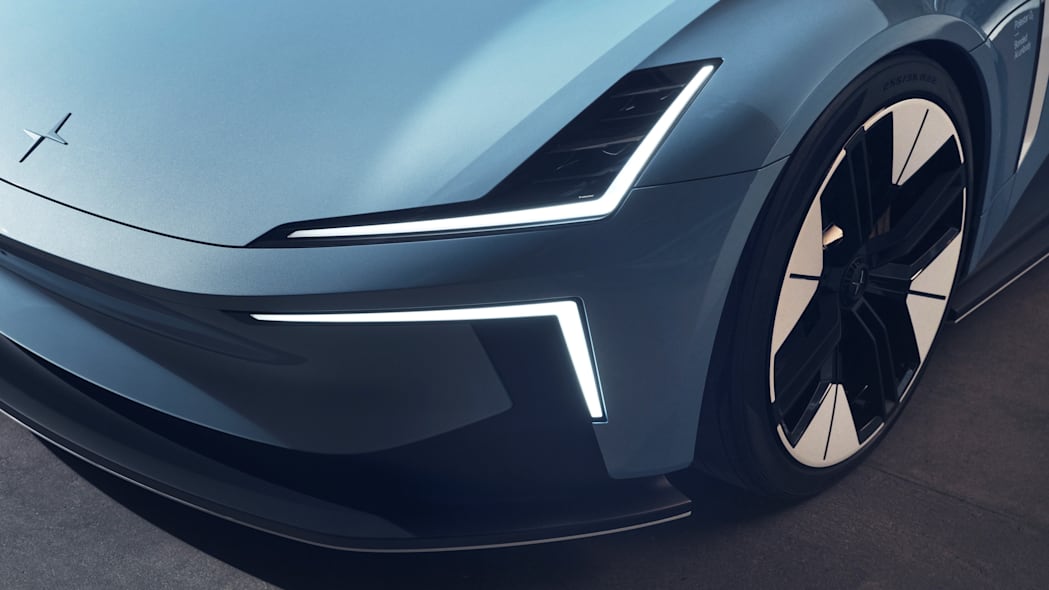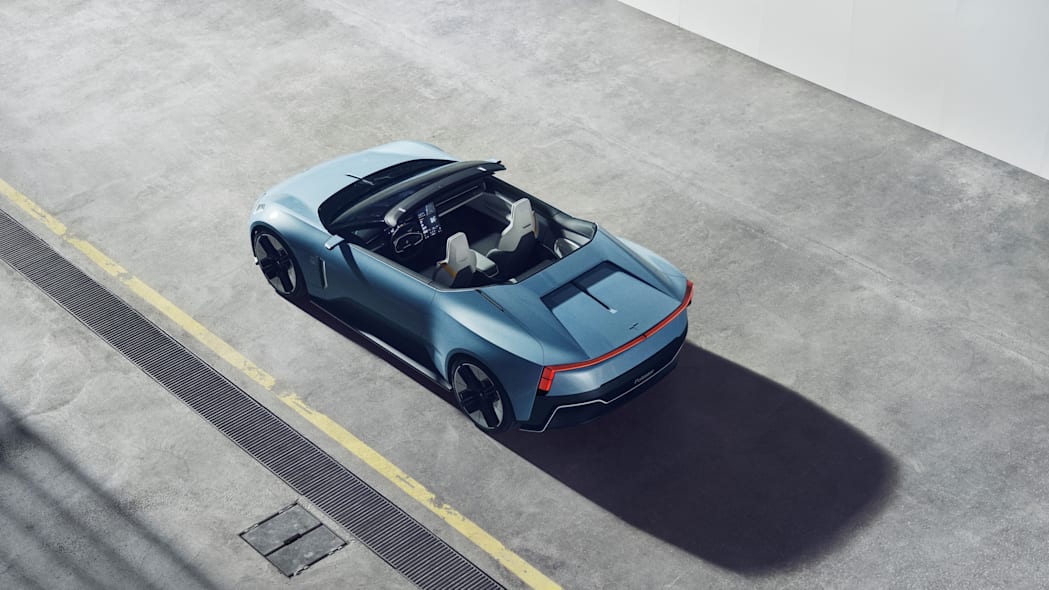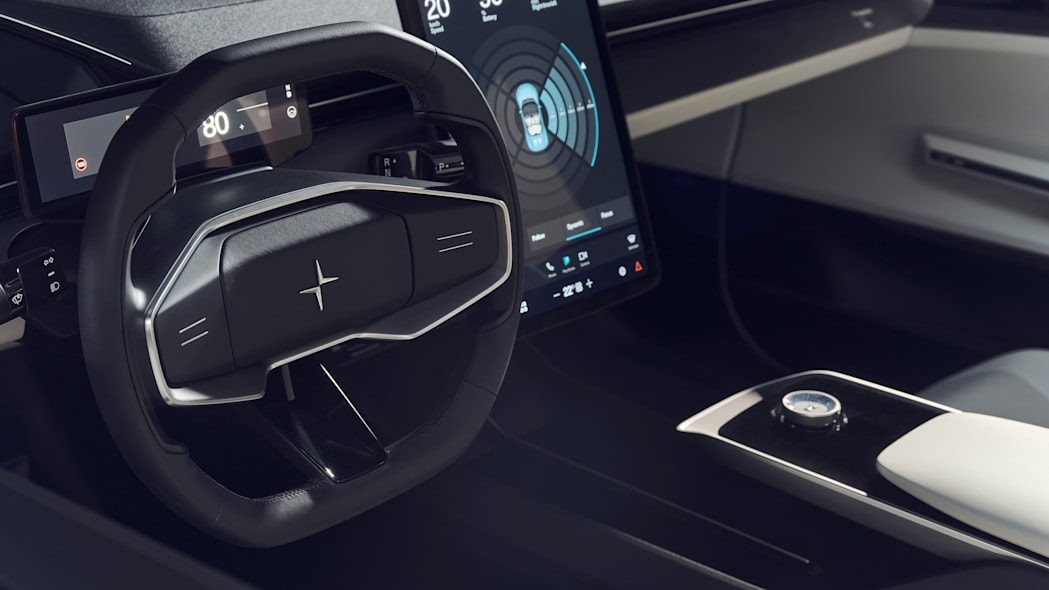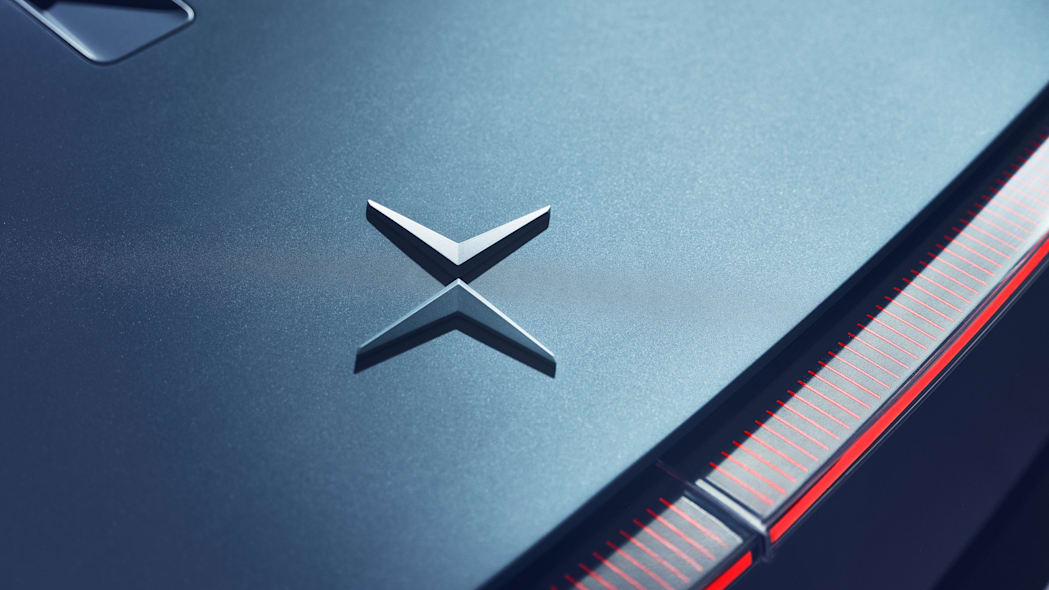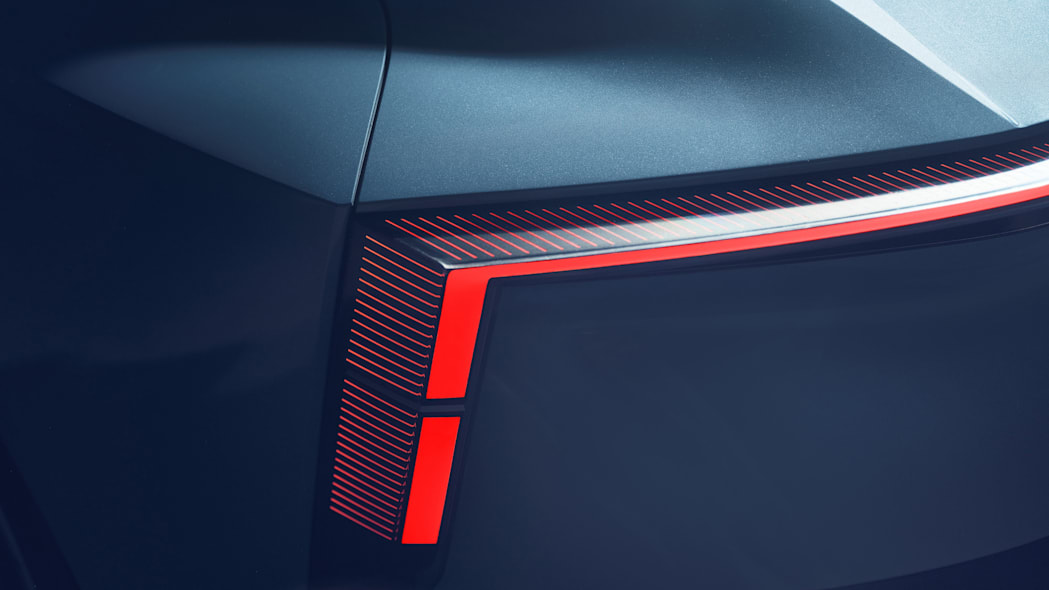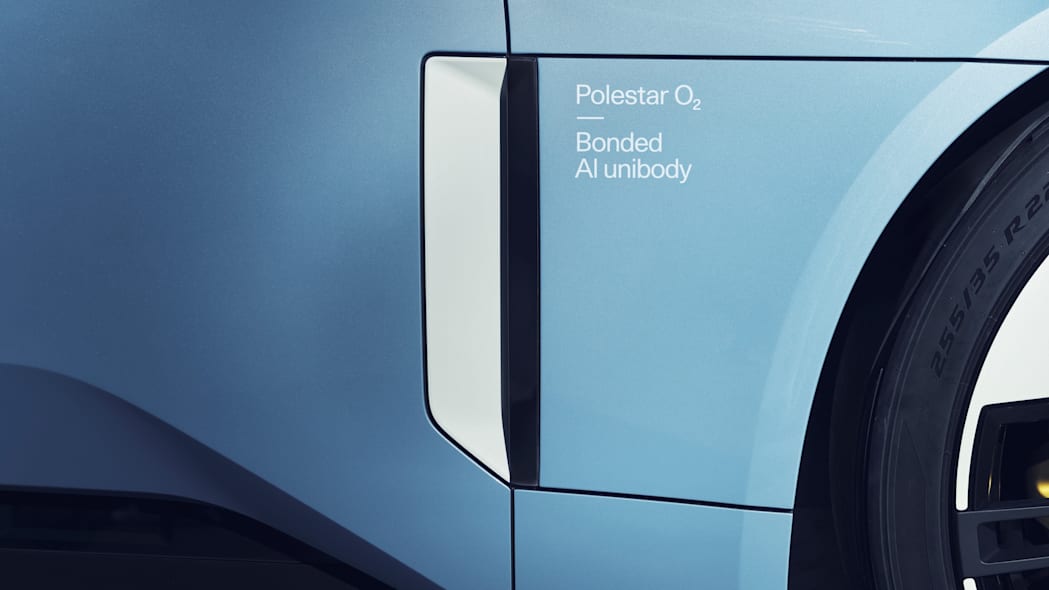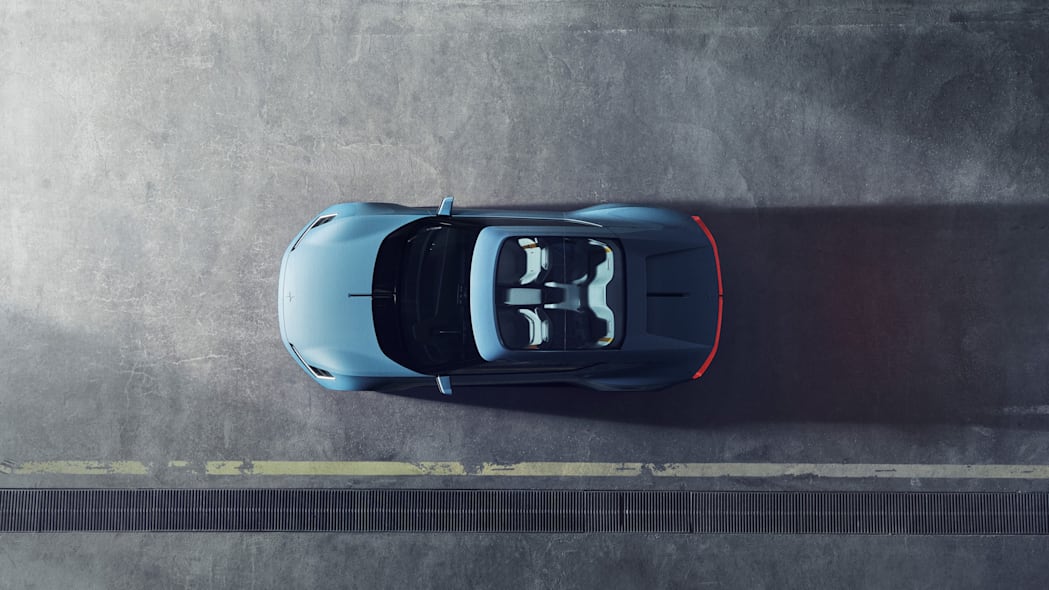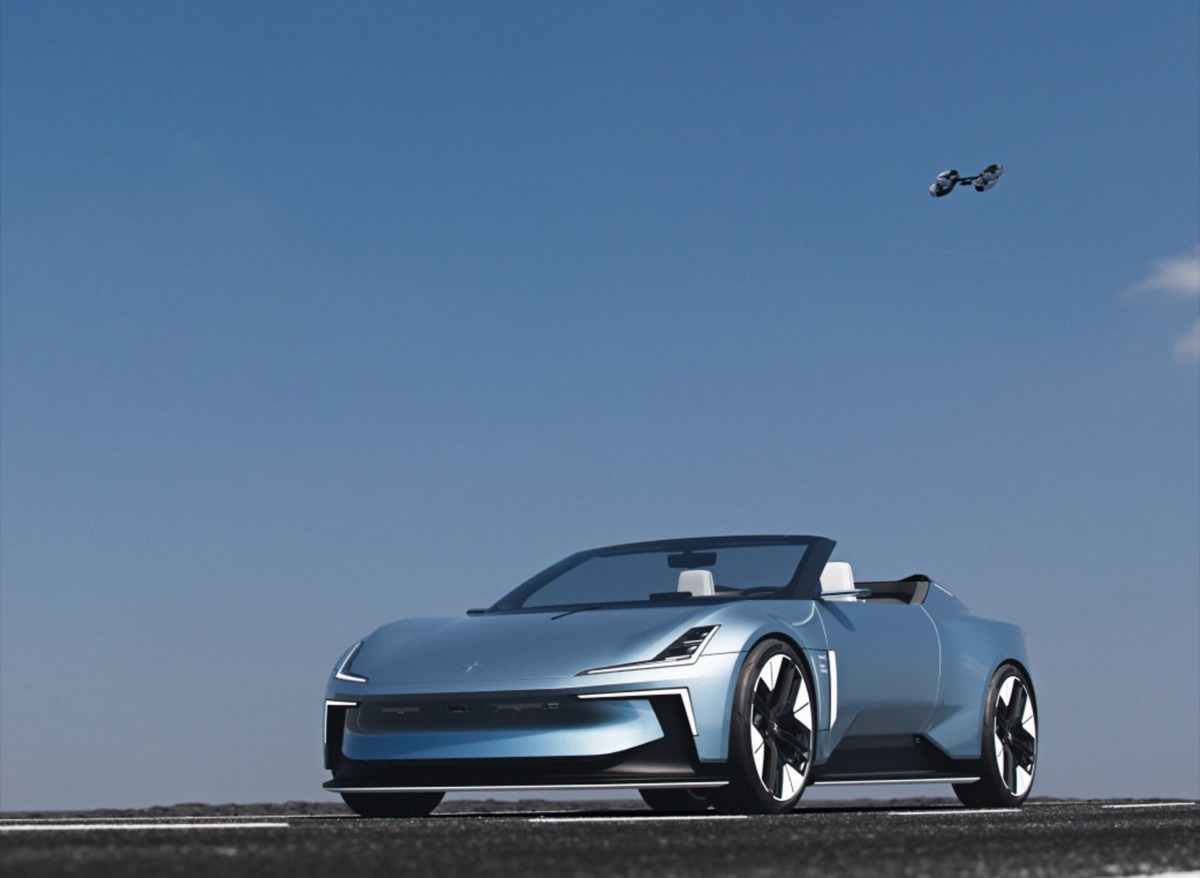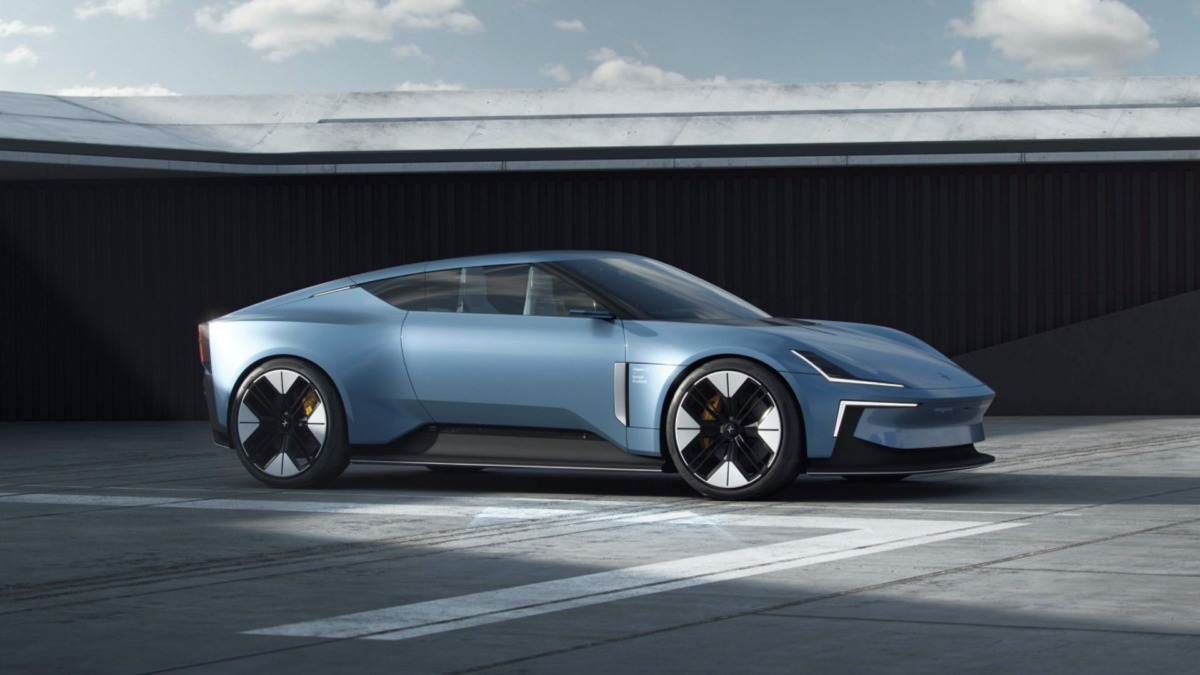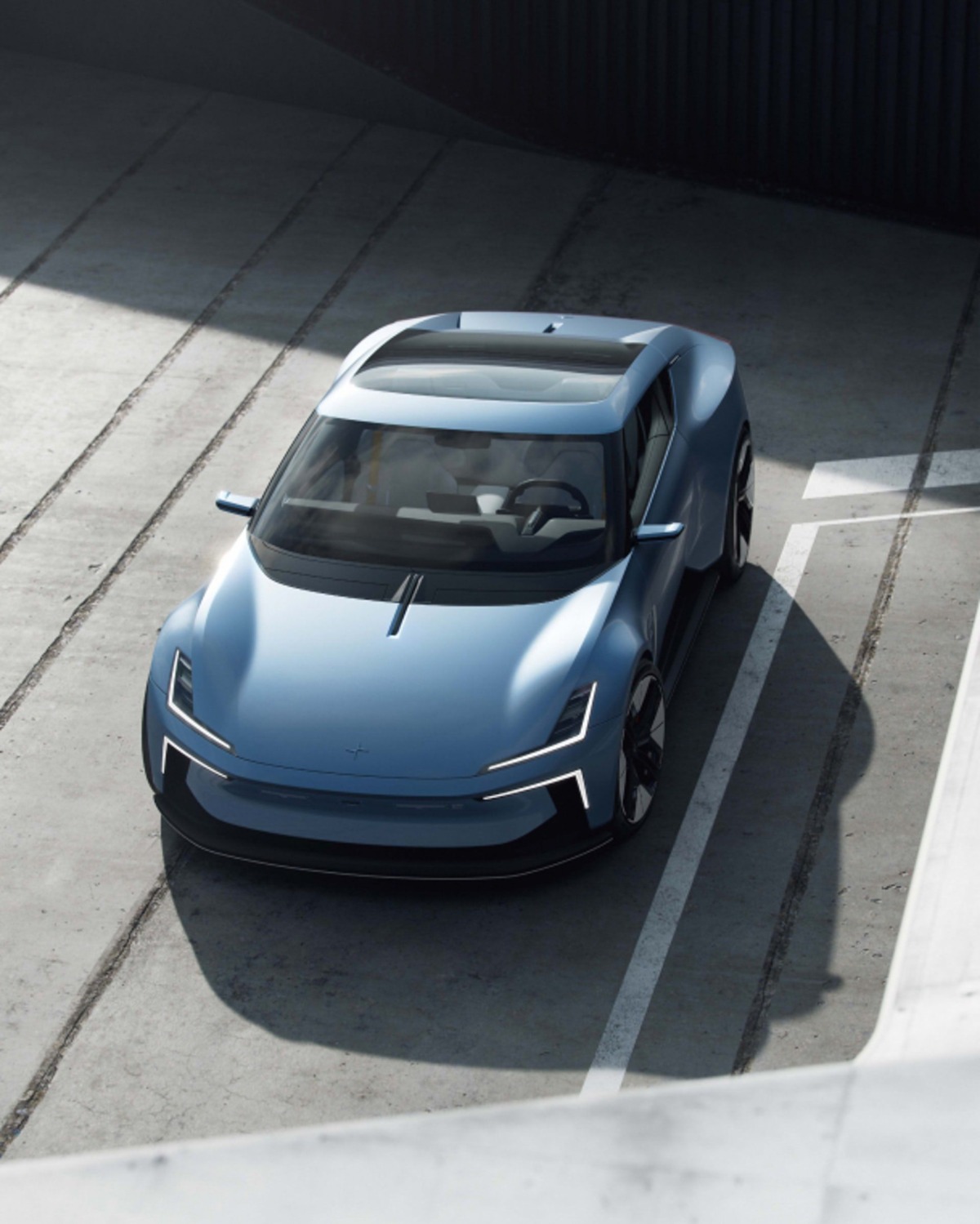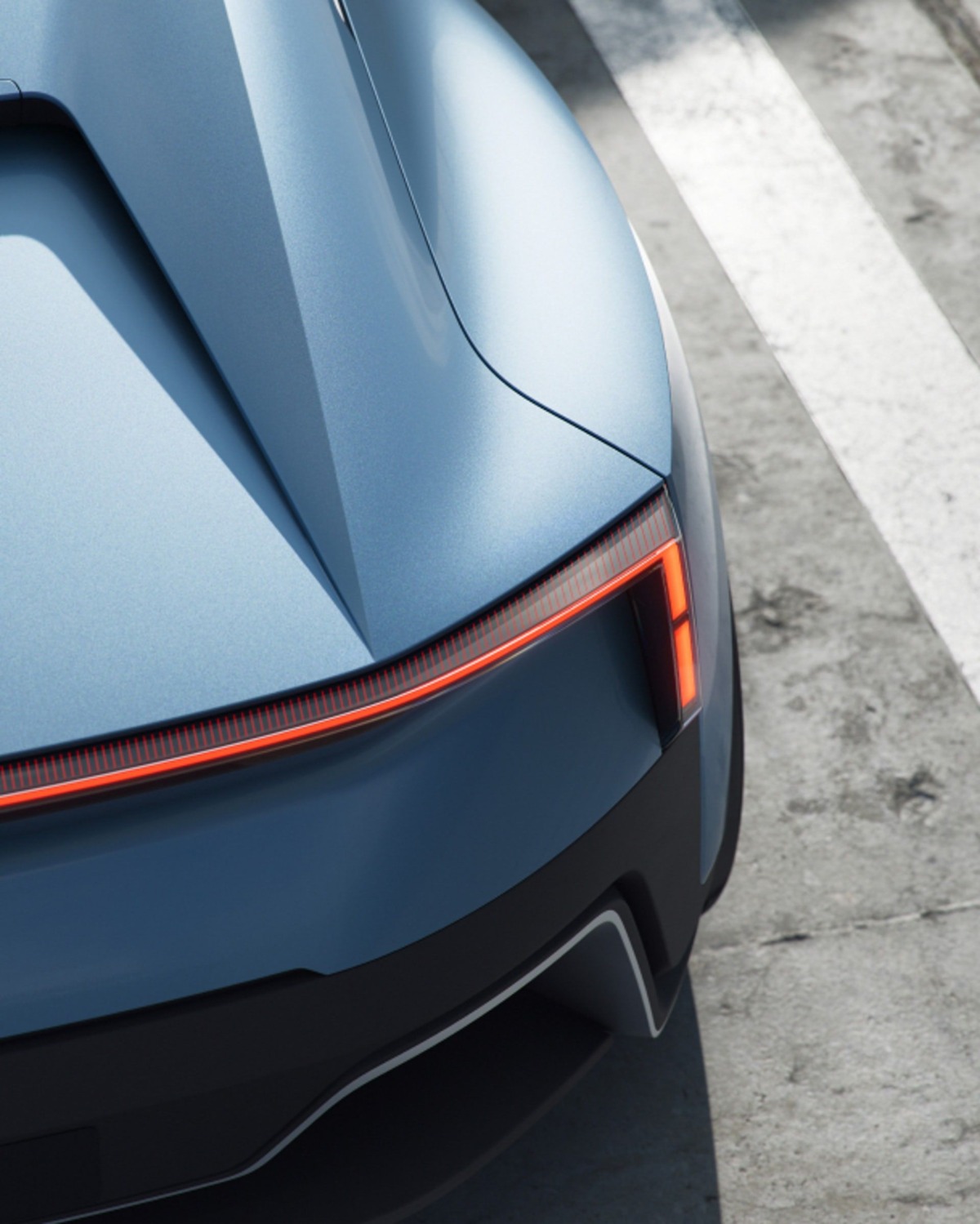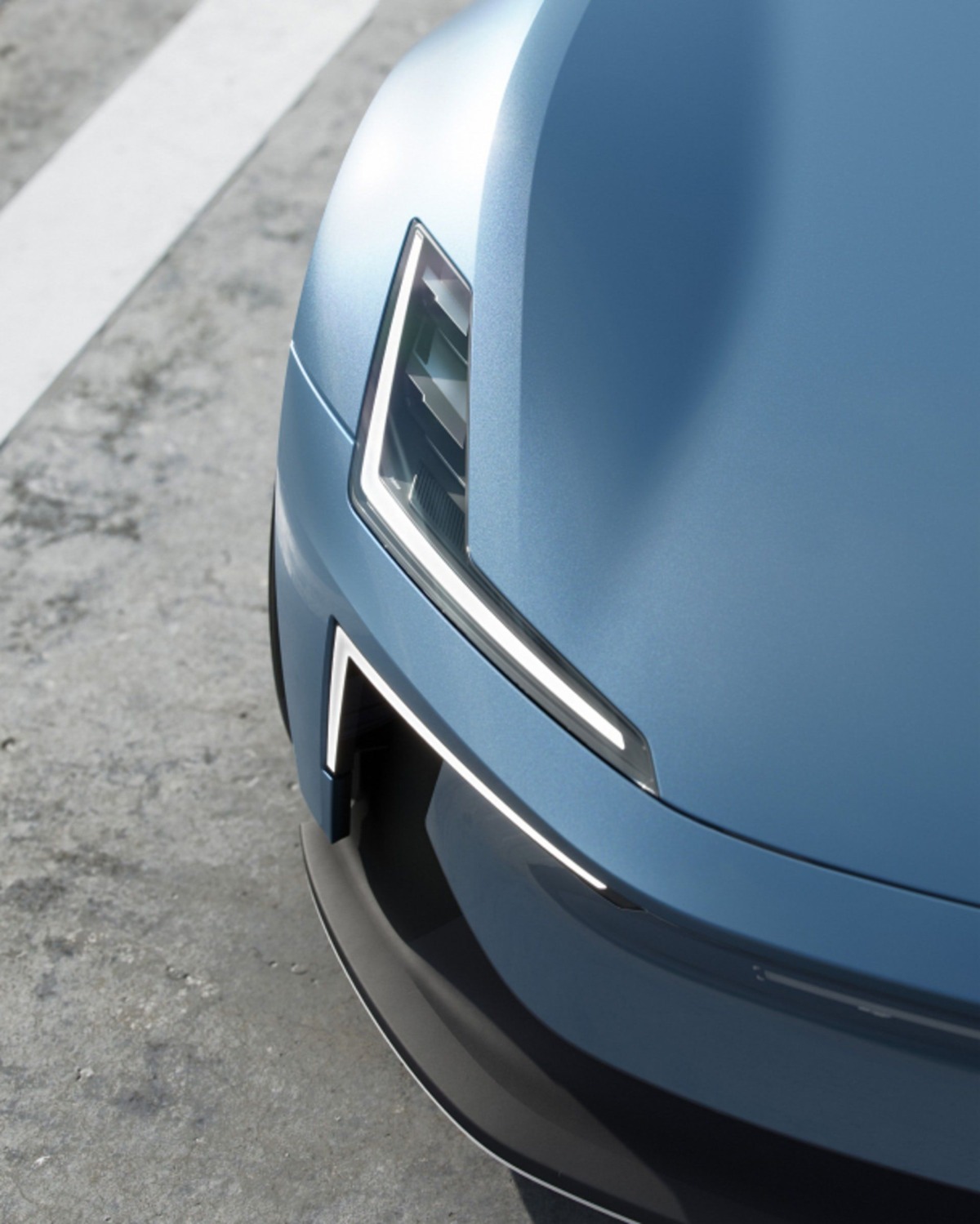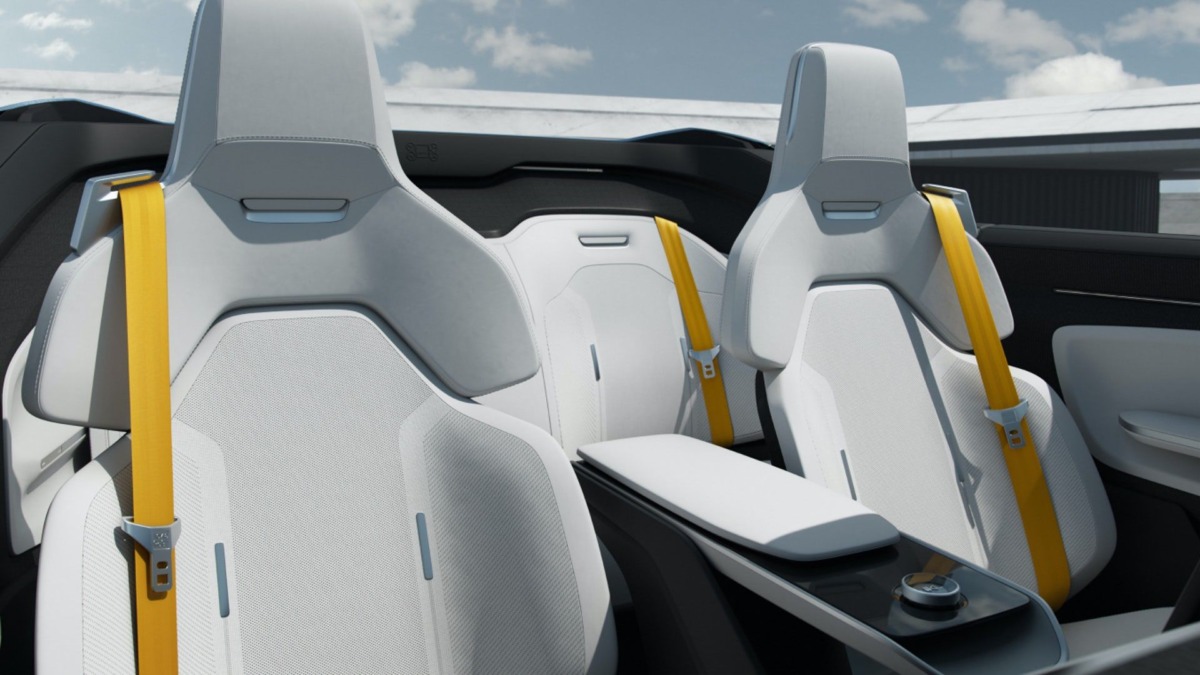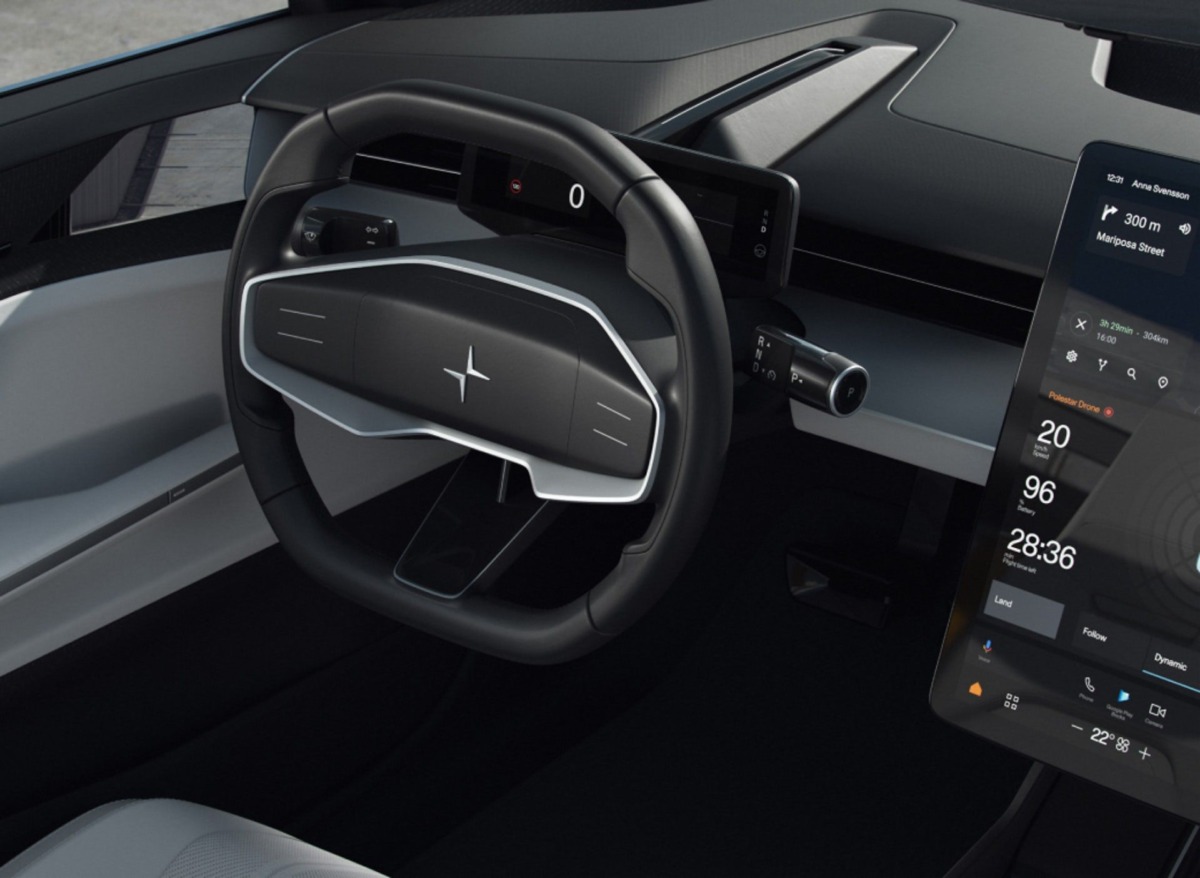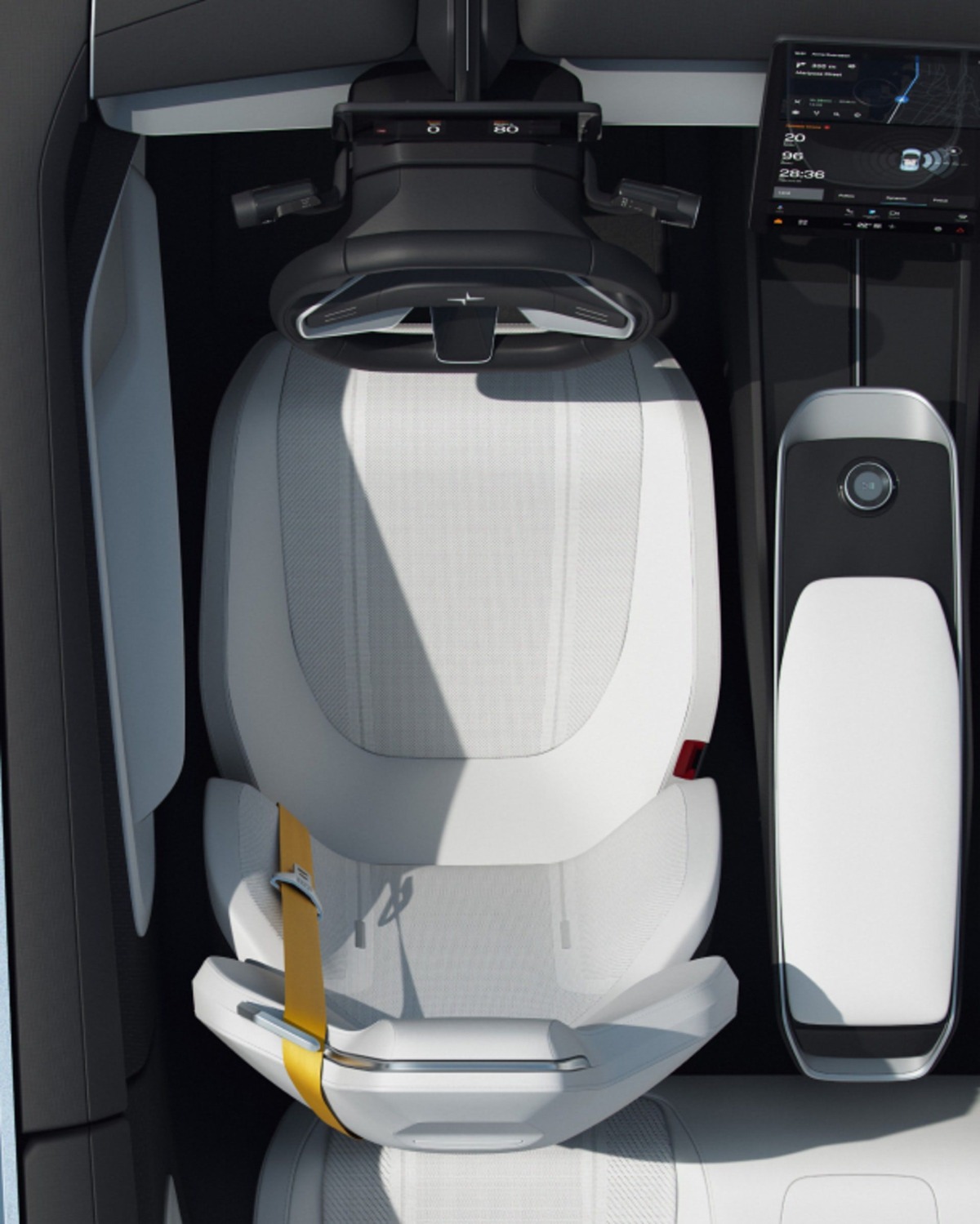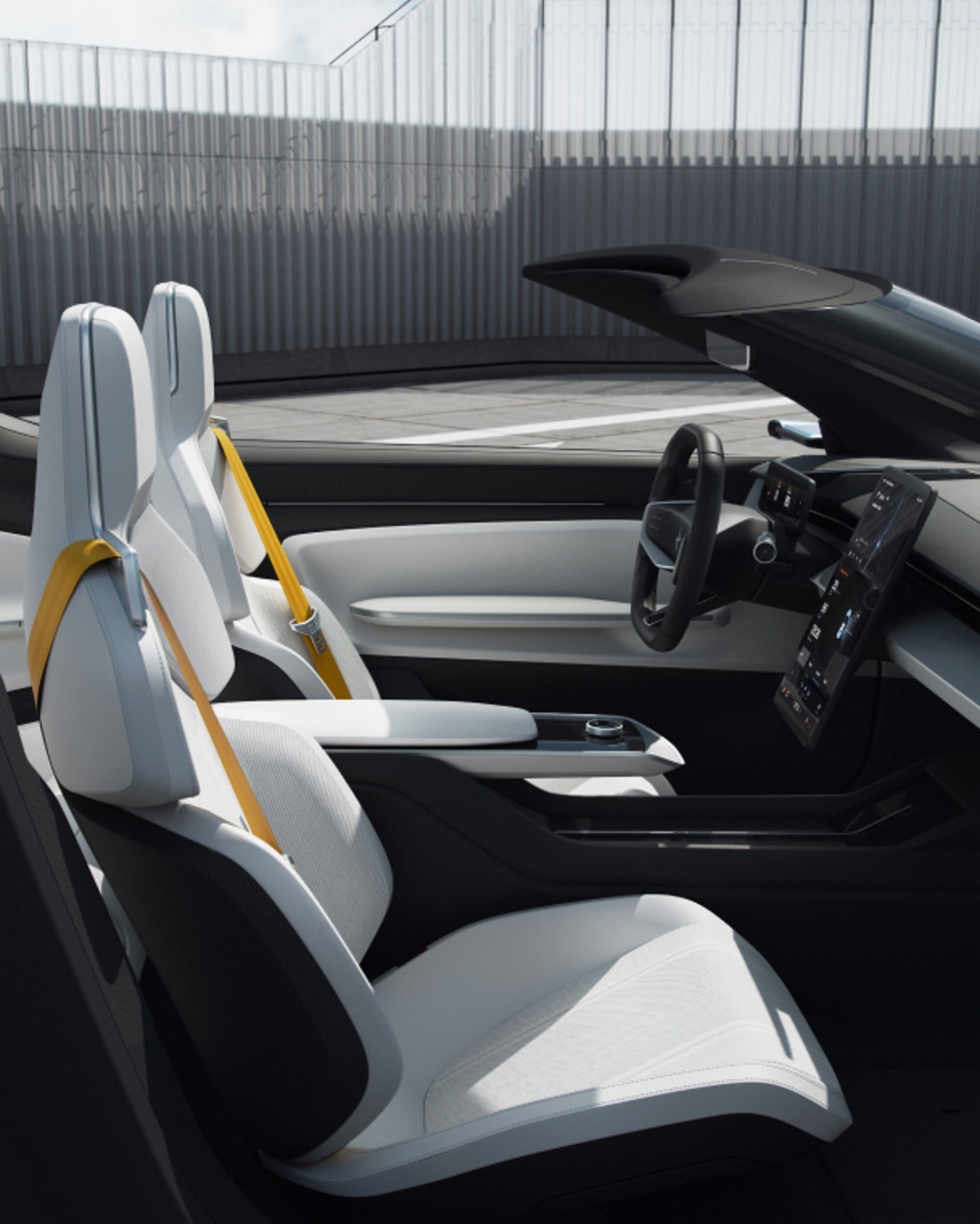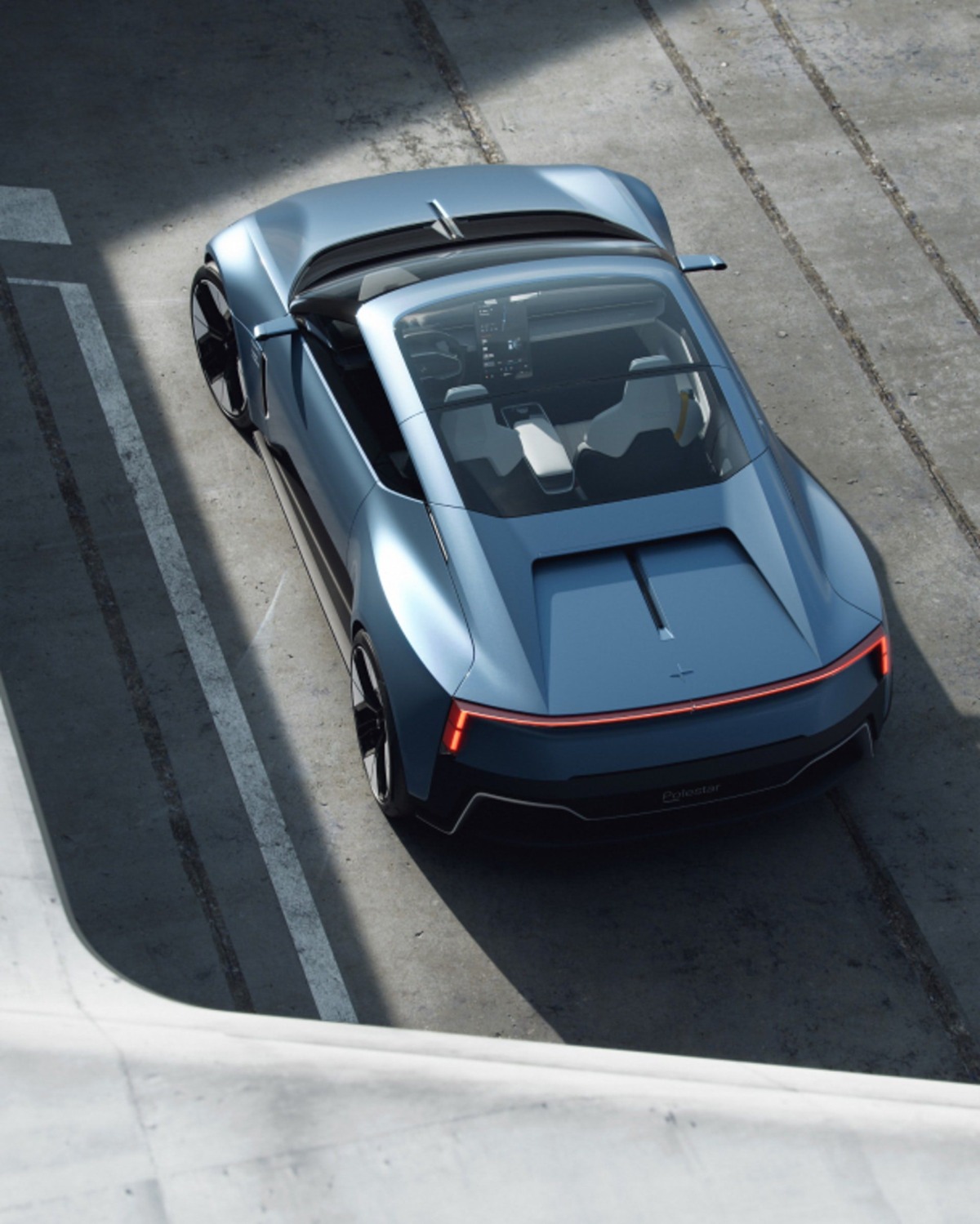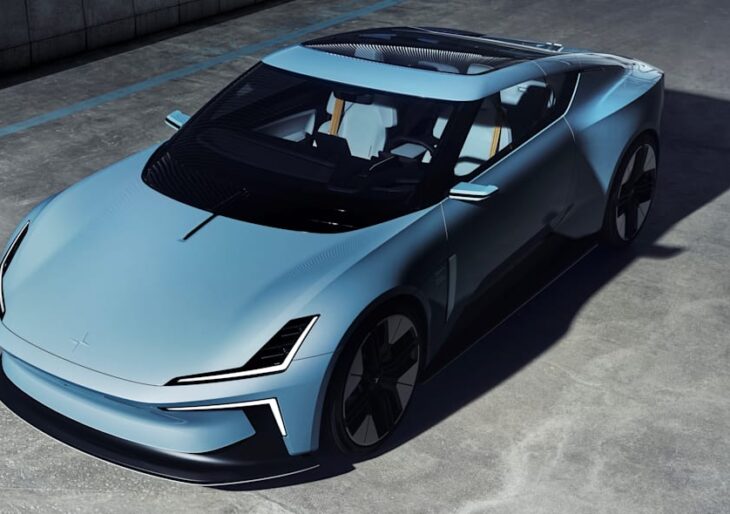Polestar announced information related to a new concept model this month. The O2, as it’s called, is a nimble-looking roadster that takes the idea of sustainability to its logical conclusion; what might be termed holistic sustainability.
The spinoff/transition company’s branding has been tough to define, but the press release packs in a syllable-heavy identifying tagline draft that indicates where it’s going at present: “…the pure play electric performance car brand.” It comes off a little clumsy, but the roadster carries the sentiment, and the youthful dimensions of the brand. Anyway, the history of this sophisticated fledgling brand speaks volumes, and its incredibly optimistic spirit seems to not only defy current marketing attempts but render them unnecessary, at least for now. Optimism sells itself these days.
The O2 picks up where the Precept left off two years ago. The Precept — now called the Polestar 5, and moving toward 2024 availability — is an ecologically relevant model from the wheels up, incorporating a ‘circular’ build and material philosophy that plans reuse in the most acute manner. The O2 is the next phase, according to CEO Thomas Ingenlath, who is quoted thusly: “O2…opens the door to our secret chamber of future potential.” Refreshingly and winningly poetic boilerplate from an automotive CEO, but it virtually encompasses the shape of the brand’s soul.
Materials in the O2 include bonded aluminum and a thermoplastic derived from recycled polyester. The PR states that grading of aluminum is used to optimize recycling down the road. And, to emphasize the ‘fun’ of the O2, the concept incorporates a drone-and-aerofoil design in back; the drone, once launched, can shoot video and automatically return to its mobile base on the go. This is a model for the young professional.
Polestar is planning to have a new model on the road each year for the next three years, beginning with the Polestar 3 this year. A true climate-neutral car is planned by 2030. Go, Polestar, go.
